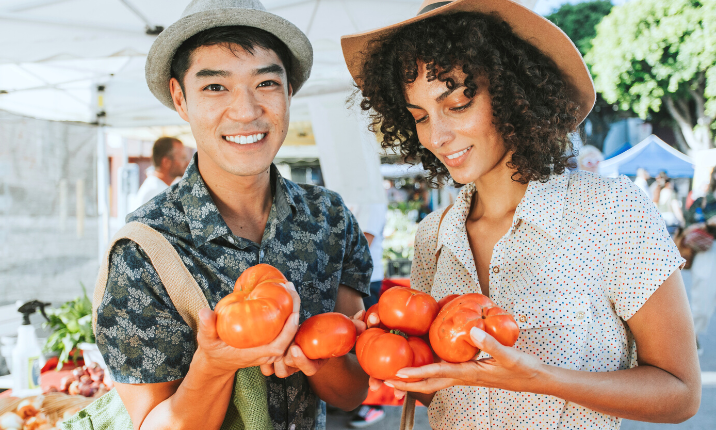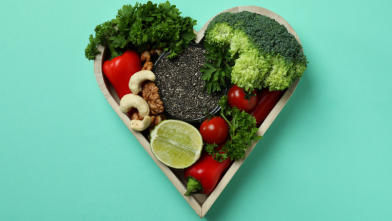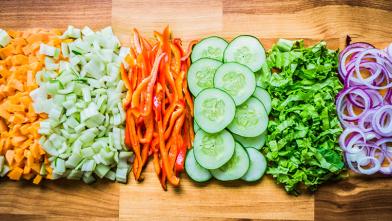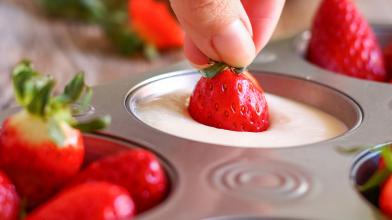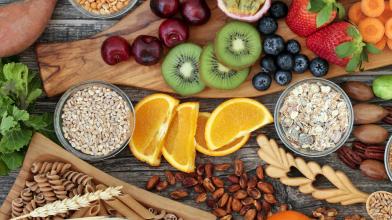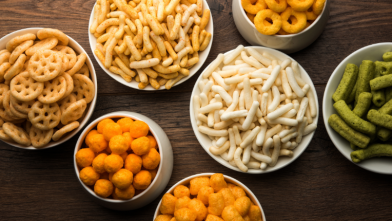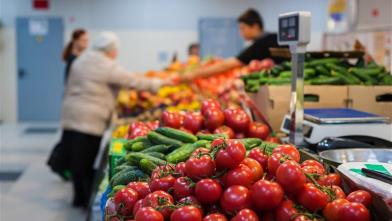Visiting the farmers market is a different experience than going to a standard supermarket. Here are eight tips to help you know what to bring and make the most of your access to farmers’ and artisans’ fresh products and knowledge!
- Bring sturdy bags or baskets to carry your purchases. And bring produce bags too. Some farmers may have bags, but it’s always good to come prepared. If you are planning to purchase a lot, bring a small cart so you don’t have to carry it all.
- Bring small bills of cash. More vendors are beginning to accept cards, but cash may be easier. Bringing your cash in $1, $5, $10, and $20 bills can help make sure the farmers and artisans will be able to break your bills and have the correct change for you. It can also make it easier for you to stay within a budget.
- Before you go to the market, write down what you’ll need to buy. Plan for the meals you will make that week and snacks you might want to pick up. Think of the Diabetes Plate as your guide for planning your meals. Half of your plate should be filled with non-starchy vegetables, one quarter with lean protein, and one quarter with a quality carbohydrate.
- Walk through the market first so you know what’s available. That way you’ll know what’s in season, and what looks good.
- Get to know the farmers at your market and ask questions. Because they know their product and can let you know what produce at its peak, give you cooking ideas, and provide samples.
- Ask the vendor about how to shop at their stall before picking things up. Some vendors may want you to bag your items and then pay, while others gather what you want for you. You can also ask the vendor if they offer samples if you want to try something before buying, but keep in mind not all vendors provide samples.
- Talk to other shoppers. Share tips for how to use an ingredient or to learn which vendor has the best selection and/or prices.
- Go early. That way you get the best selection.
- Go late. When things are winding down, you can try and get deals from farmers who may not want to pack up what they haven’t sold (but not at closing time when everyone’s packing up). Those slightly limp bunches of kale or broccoli left at the end of the market will be just as good once cooked. Other picked-over fruits and vegetables can be preserved or used in stir fries (like an Asian Tofu Stir Fry), stews and soups, or yogurt parfaits.
- Be open to “ugly produce,” which may have minor marks, flaws, or bruising, and eggs that aren’t normal size. Eggs and produce don’t need to look pretty to taste great—and sometimes they are sold at lower prices. Despite the way they look, they will still be just as tasty!
Most of all, have an open mind on your trip. A farmers’ market is a great way to find and try new types of produce and you can prepare meals with fresh produce that’s in season.
Be aware of what fruits and veggies are in season to enjoy your favorites when they’re fresh. You may find that what you buy at the farmers market inspires you to create new, flavorful, and healthy dishes. Don’t forget to sign up for Diabetes Food Hub’s e-newsletter for diabetes-friendly ideas and recipes using your fresh new produce!
